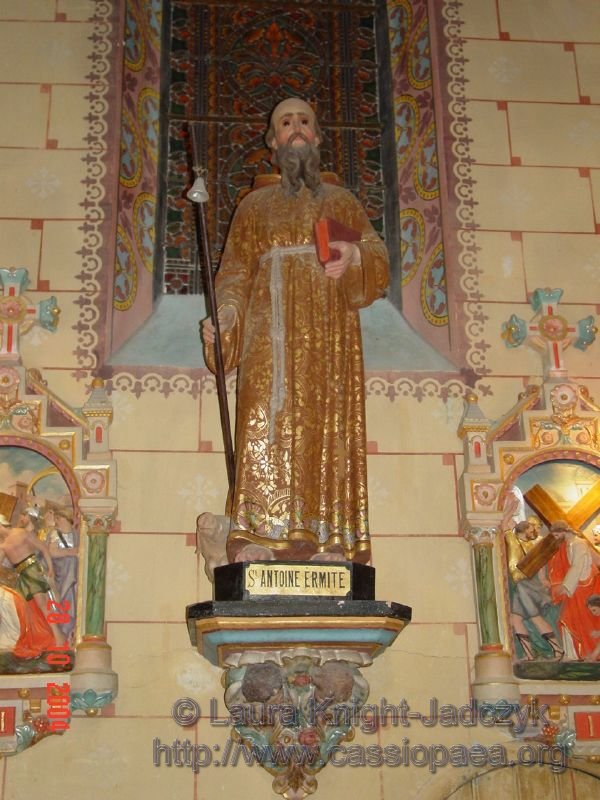The Quantum Future School Goes to Rennes-le-Chateau (27 of 68)
![[First]](bw_first.gif)
|
![[Prev]](bw_prev.gif)
|
![[Index]](bw_index.gif)
|
![[Next]](bw_next.gif)
|
![[Last]](bw_last.gif)
|

|
|
Founder of Christian monasticism. The chief source of information on St. Anthony is a Greek Life attributed to St. Athanasius, to be found in any edition of his works. Anthony was born at Coma, near Heracleopolis Magna in Fayum, about the middle of the third century. He was the son of well-to-do parents, and on their death, in his twentieth year, he inherited their possessions. He had a desire to imitate the life of the Apostles and the early Christians, and one day, on hearing in the church the Gospel words, "If thou wilt be perfect, go and sell all thou hast", he received them as spoken to himself, disposed of all his property and goods, and devoted himself exclusively to religious exercises. Long before this it had been usual for Christians to practice asceticism, abstain from marriage and exercising themselves in self-denial, fasting, prayer, and works of piety; but this they had done in the midst of their families, and without leaving house or home. Later on, in Egypt. such ascetics lived in huts, in the outskirts of the towns and villages, and this was the common practice about 270, when Anthony withdrew from the world. He began his career by practising the ascetical life in this fashion without leaving his native place. He used to visit the various ascetics, study their lives, and try to learn from each of them the virtue in which he seemed to excel. Then he took up his abode in one of the tombs, near his native village, and there it was that the Life records those strange conflicts with demons in the shape of wild beasts, who inflicted blows upon him, and sometimes left him nearly dead. After fifteen years of this life, at the age of thirty-five, Anthony determined to withdraw from the habitations of men and retire in absolute solitude. He crossed the Nile, and on a mountain near the east bank, then called Pispir, now Der el Memum, he found an old fort into which he shut himself, and lived there for twenty years without seeing the face of man, food being thrown to him over the wall. He was at times visited by pilgrims, whom he refused to see; but gradually a number of would-be disciples established themselves in caves and in huts around the mountain. Thus a colony of ascetics was formed, who begged Anthony to come forth and be their guide in the spiritual life. At length, about the year 305, he yielded to their requests and emerged from his retreat. To the surprise of all, he appeared to be as when he had gone in, not emaciated, but vigorous in body and mind. For five or six years he devoted himself to the instruction and organization of the great body of monks that had grown up around him; but then he again withdrew into the desert that lay between the Nile and the Red Sea, near the shore of which he fixed his hermitage on a mountain where still stands the monastery that bears his name, Der Mar Antonios. Here he spent the last forty-five years of his life. The Life says he dies at the age of a hundred and five, and St. Jerome places his death in 356-357. All the chronology is based on the hypothesis that this date and the figures in the Life are correct. At his own request his grave was kept secret by the two disciples who buried him, lest his body should become an object of reverence.
|
![[First]](bw_first.gif)
|
![[Prev]](bw_prev.gif)
|
![[Index]](bw_index.gif)
|
![[Next]](bw_next.gif)
|
![[Last]](bw_last.gif)
|